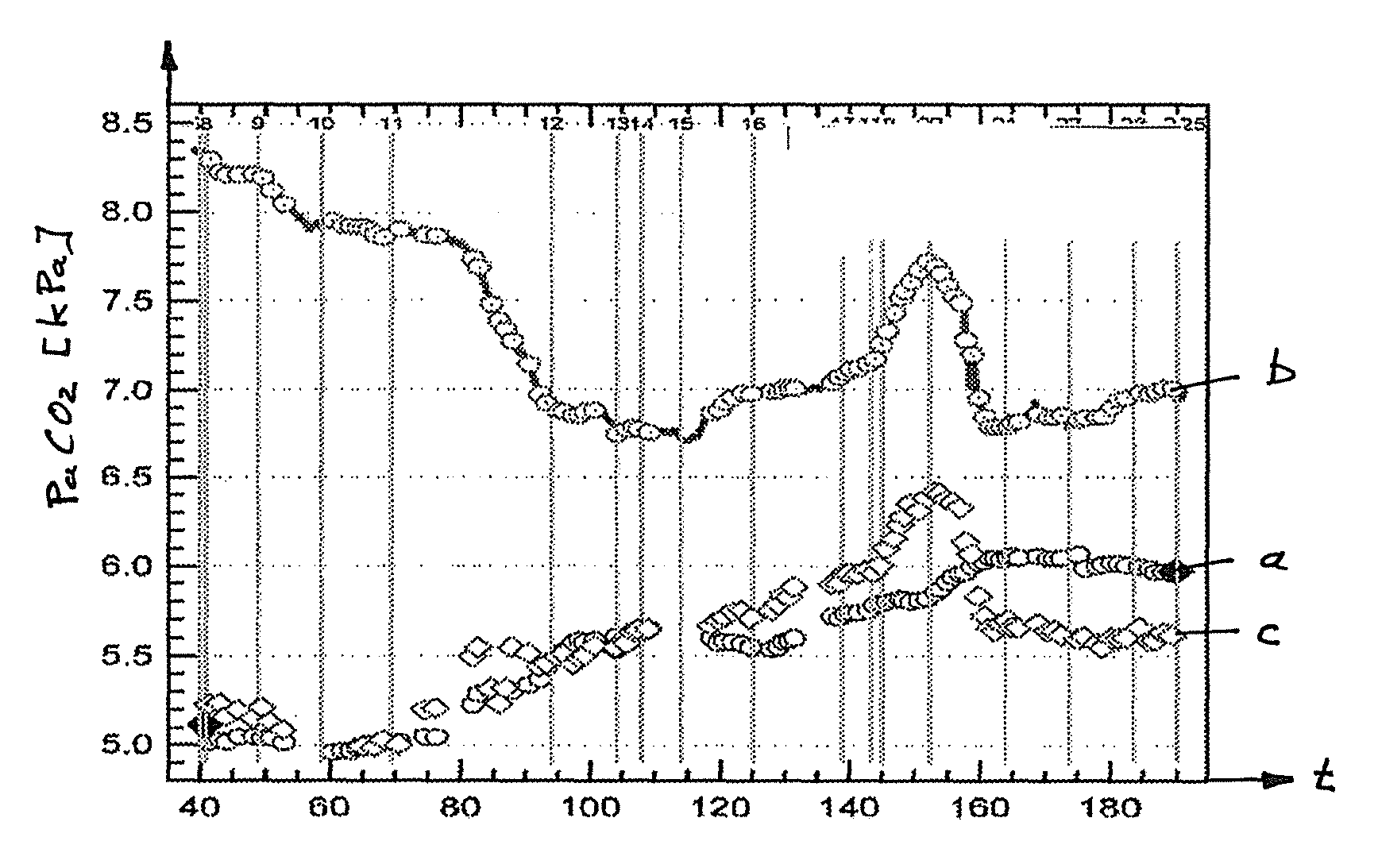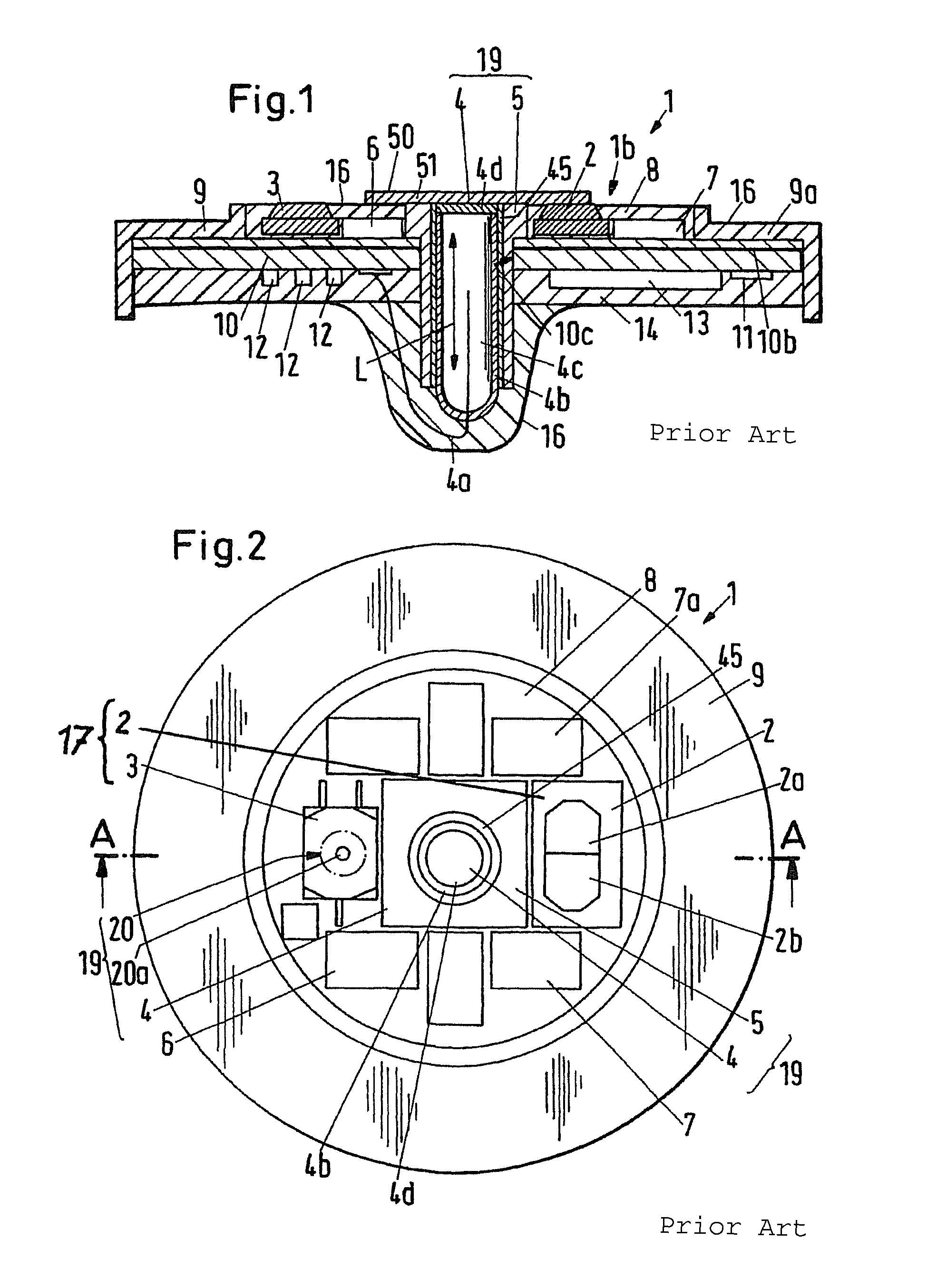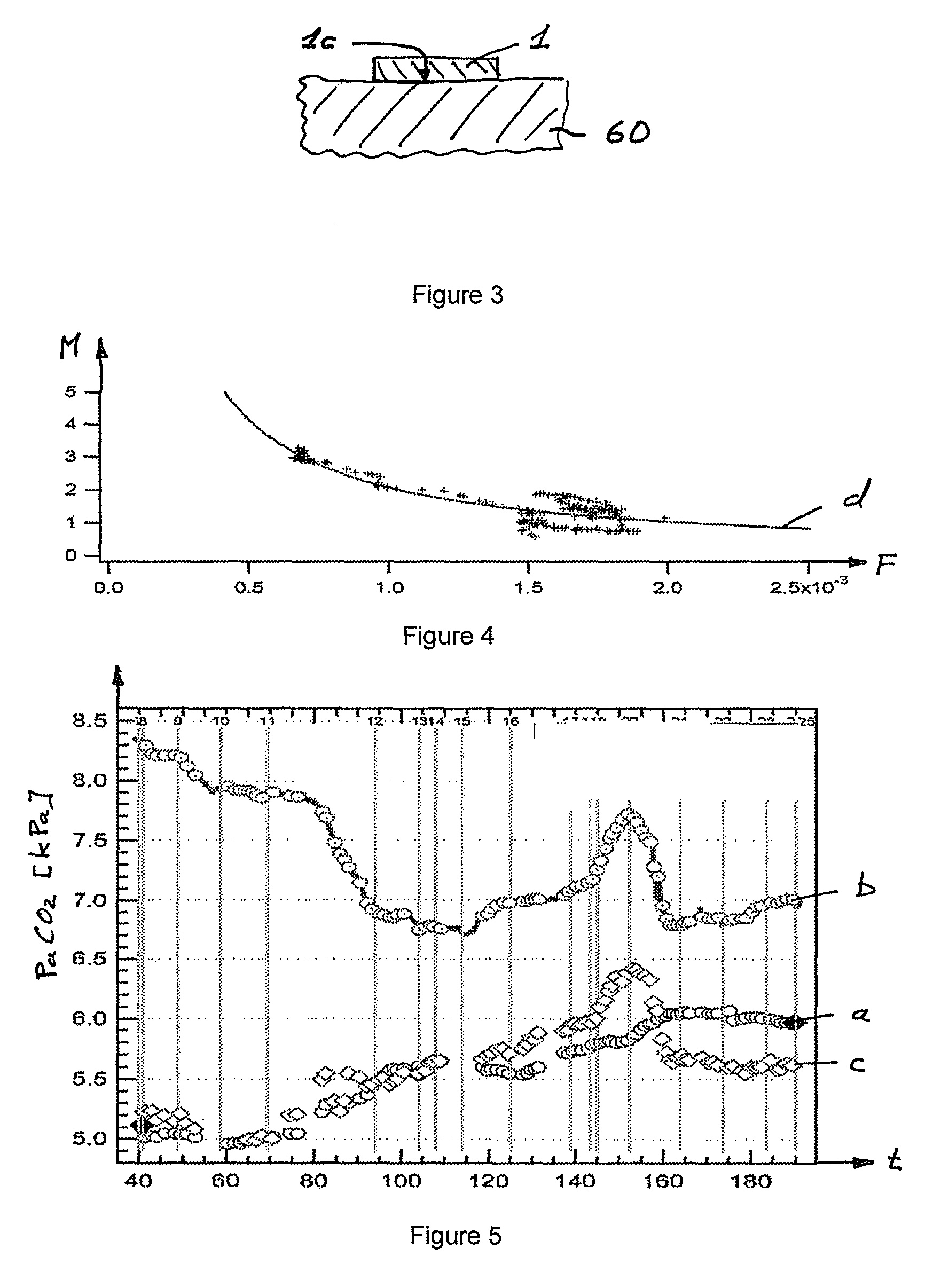Device and method for transcutaneous determination of blood gases
a technology for blood gases and devices, applied in diagnostics, medical science, other medical devices, etc., can solve the problems of insufficient replenishment of blood imports, large deviations, and incorrect transcutaneous determination of blood gases, and achieve the effect of improving coinciden
- Summary
- Abstract
- Description
- Claims
- Application Information
AI Technical Summary
Benefits of technology
Problems solved by technology
Method used
Image
Examples
Embodiment Construction
[0048]The sensor 1 shown in FIGS. 1 and 2 is known from document WO 02 / 41770 The sensor 1 shown allows a combined measurement of the arterial oxygen saturation (SpO2) and of the transcutaneous CO2 partial pressure (tcpCO2). For the measurement of the oxygen saturation, the sensor 1 has a pulse oximetric measurement system 17 which includes, among other things, a two-color light emitting diode 2 (LED) as well as a photodetector 3. The two-color light emitting diode 2 includes two light emitting diodes 2a, 2b disposed closely next to one another and arranged in a common housing, with the one light emitting diode 2a having a wavelength of approximately 660 μm (red) and the other light emitting diode 2b having a wavelength of approximately 890 μm (infrared). The sensor 1 has a surface 1b over which, in the embodiment shown, a membrane 50 is arranged and therebetween a thin layer of electrolyte 51. This membrane 50 is placed on the skin at a point of the human body which has a good blood...
PUM
 Login to View More
Login to View More Abstract
Description
Claims
Application Information
 Login to View More
Login to View More - R&D
- Intellectual Property
- Life Sciences
- Materials
- Tech Scout
- Unparalleled Data Quality
- Higher Quality Content
- 60% Fewer Hallucinations
Browse by: Latest US Patents, China's latest patents, Technical Efficacy Thesaurus, Application Domain, Technology Topic, Popular Technical Reports.
© 2025 PatSnap. All rights reserved.Legal|Privacy policy|Modern Slavery Act Transparency Statement|Sitemap|About US| Contact US: help@patsnap.com



